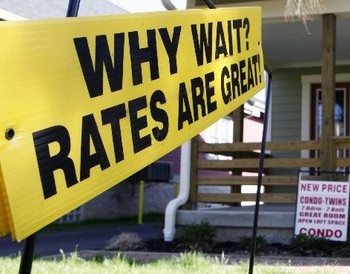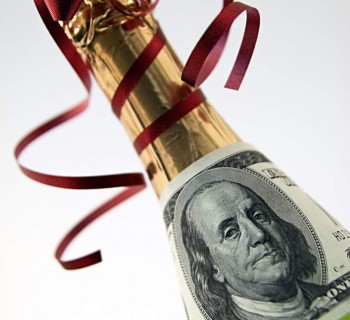 Americans are buying more automobiles than they have in years. In fact, according to J.D. Power and Associates, the auto industry is on track to sell more than 16 million vehicles this year.
Americans are buying more automobiles than they have in years. In fact, according to J.D. Power and Associates, the auto industry is on track to sell more than 16 million vehicles this year.
If you, too, happen to be in the market for a new vehicle, it is critical to do your homework before signing on that dotted line. Understanding the pros and cons of leasing versus buying may help reduce the chances of being taken for a ride.
From how long you plan to keep your vehicle to how many miles you plan on using your vehicle, there are many factors to consider when choosing which type of transaction is right for you.
While statistics from Edmunds.com suggest that the number of consumers leasing have been slowly rising, (nearly one in four vehicles are leased), it is not an appropriate strategy for everyone. The first step in determining the most appropriate approach is to understand the mechanics of the transaction itself.
While an auto purchase is straightforward, an auto lease can be quite complex. Leasing terms can be confusing and as a result, many shoppers enter into deals that are not necessarily best for their circumstances.
So what are the key terms to be aware of in a lease?
Capitalized cost: This represents the value of the automobile that is being financed over the term of the lease. Since lease terms are generally 3 years, monthly lease payments appear to be cheaper because you are financing a lower amount than if you were purchasing the same vehicle. This allows many consumers to drive a more expensive car than they could afford if they were buying — not necessarily a good thing.
Residual value: This represents what the vehicle’s value is at the end of the lease. Generally, a higher residual value will lead to lower monthly payments during the lease since you are using up less of the vehicle’s value. However, this could be good or bad depending on your circumstances. If you plan to purchase the vehicle at the end of the lease, higher residuals mean you could be overpaying.
Money factor: This is a fancy way of describing the interest rate being charged to finance the value of the lease. Remember, since you are not buying the car in a lease, you are really financing the cost to use the vehicle over the lease term. A lower money factor means that you are paying less interest in the deal. In order to convert money factors to interest rates, simply multiply the money factor given by 2,400. For example, a money factor of .00125 would equate to a 3 percent interest rate.
Cap cost reductions: These are down payments that reduce the value of the automobile being financed through the lease. While these down payments can reduce your monthly lease payments, you do not get anything back at the end of the deal. Remember, in a lease, you simply turn in the car and are left with no equity. Rather than paying large cap cost reductions, consider using multiple security deposits (MSDs) if available.
MSDs can be an attractive way to reduce your monthly payments. For example, if your lease payment is $300/month, you may be able to make a maximum of 10 security deposits, totaling $3,000 which in turn, will reduce your “money factor” or interest rate. A lower interest rate means lower lease payments.
MSDs are returned at the end of the lease (assuming the vehicle is returned in good condition). Additionally, you can choose to apply the MSDs toward your next deal, too.
Depending on the reduction in money factor and investment alternatives for the money being deposited, MSDs can be an effective way to reduce the cost of your lease.
Also pay close attention to mileage restrictions, excess wear and tear charges and disposition fees when leasing, as all may result in additional fees.
So when does it make sense to lease?
Business owners who use their vehicle for purposes that qualify for a tax deduction can be a good fit for leases. For consumers who trade in their vehicles often or would prefer to get a new vehicle every few years, leasing may also be a good fit.
Since most vehicles are still under warranty when the lease term ends, leasing can be attractive for those who do not want to worry about car trouble or need to have the latest gadgets and technology.
Bottom line — If you are going to obtain a new car every 3-5 years and can adhere to mileage restrictions, leasing can make some sense. However, you should ask yourself, “Do I really need to drive a new car every 3 years?”
More often than not, purchasing a vehicle and driving it over its life span before trading it in for a new model is more cost effective than leasing.
Ron Montoya, consumer advice editor for Edmunds.com, states “In my experience, it is almost always more expensive to lease than buy. However, consumers often prefer to turn in their vehicles for new models every few years. Even though this can be expensive, some consumers simply prefer to have the newest model.”
Regardless of which you choose, devoting a large portion of your income toward a depreciating asset like a vehicle can be costly over time.
Keep in mind: Whether leasing or purchasing, it still comes down to negotiating a good deal.
Consider visiting Edmunds.com for online calculators that can help. Since everyone’s situation is unique, consider speaking to your tax and financial adviser to determine the most appropriate plan for you.
Kurt J. Rossi, MBA, CFP®, CRPC®, AIF® is a CERTIFIED FINANCIAL PLANNERtm Practitioner & Wealth Advisor. He can be reached for questions at 732-280-7550, kurt.rossi@Independentwm.com, www.bringyourfinancestolife.com & www.Independentwm.com. LPL Financial Member FINRA/SIPC.








